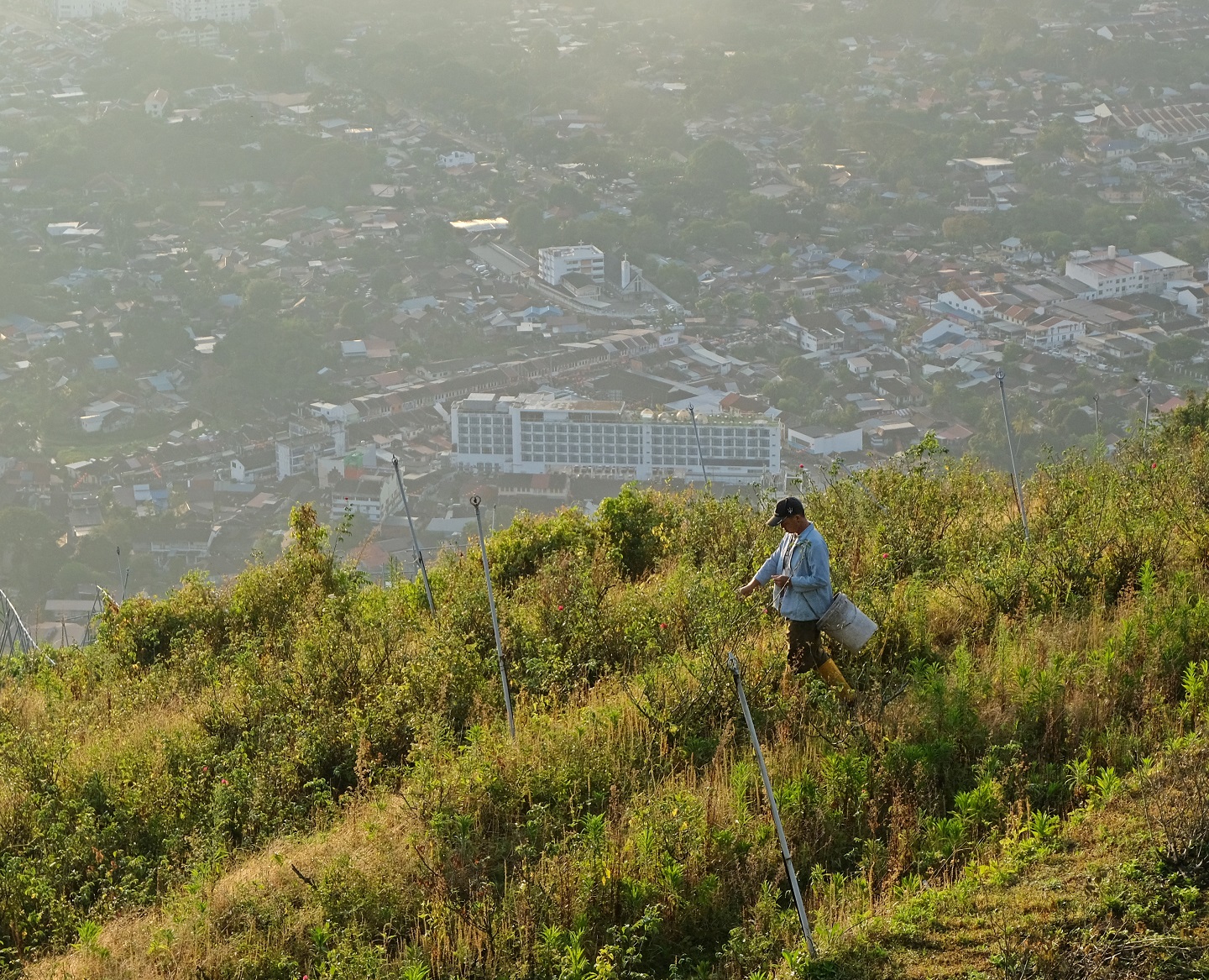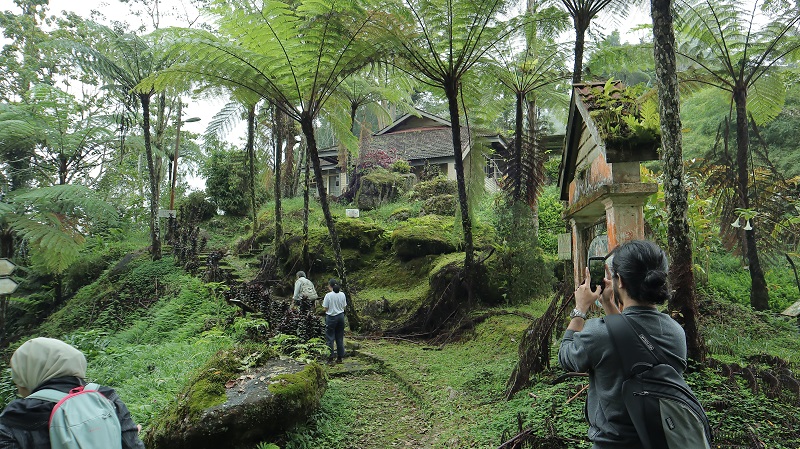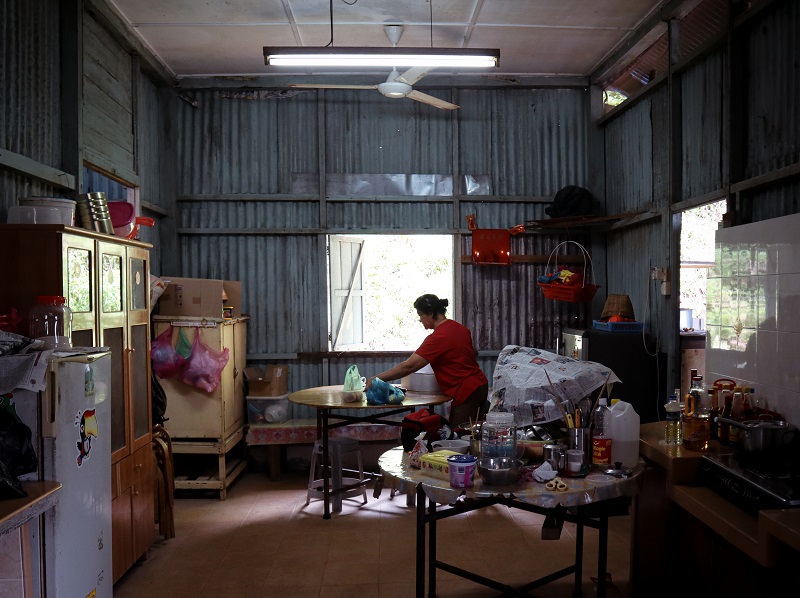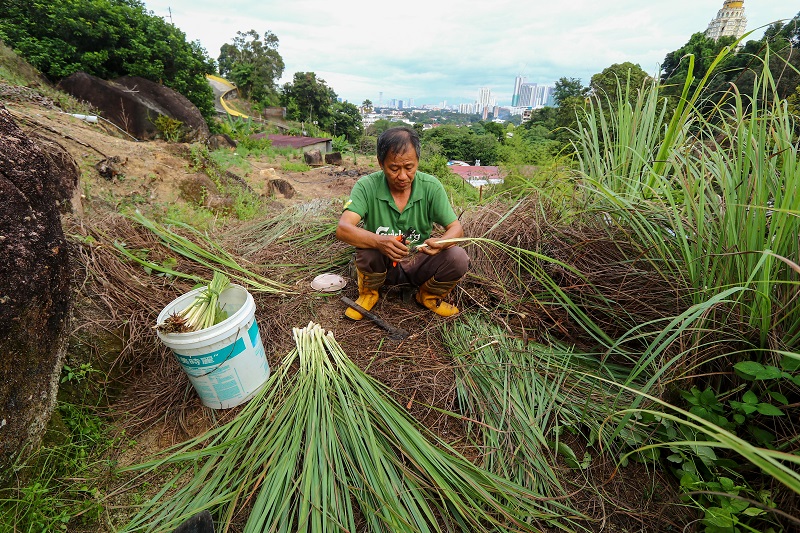
A farmer harvesting roses (All photos: A Tale of Two Hills)
The colonial hill stations in the country, Penang Hill and Maxwell Hill, have their foundations rooted in the natural heritage and culture of the country. Communities that have lived or are living around them have stories to tell about life, livelihoods and how they connect with the land, the railway lines that carry people and goods up and down the tracks daily, and the stations — landmarks many can relate to and have fond memories of.
A Tale of Two Hills features eight visual narratives, four each on Penang and Taiping, focusing on sustainability, biodiversity and endemicity, society and the cultural impact of colonialism, migration and inter-generational dynamics of those who call the highlands homes.
004_ataleof2hill_fieldwork_on_maxwell_hill_team_fieldwork.jpg

From farmers to traders to people who maintain residences in the hills and those who run the trains, many can trace their past to generations that came before them. Their stories, which remain largely untold, form the tapestry of life on the hill. The narrators sought out these folks and give them a voice.
Foo Wei Meng, Yeap Lee Hua, Oh Chin Eng and Ong Ke Shin focused on Penang Hill, while Antoine Loncle, Farahin Fadzlishah, Low Pey Sien and Wong Poh Yoke centred their work on Maxwell Hill.
Two exhibitions highlight what they discovered about Penang Hill (also known as Flagstaff Hill) and Maxwell Hill. They are being held, respectively, at Mano Plus, Lebuh Pantai, George Town (until March 2), and at Maxwell Basecamp, at the foot of Bukit Larut, Taiping (March 3).
014_penang_ong_ke_shin_kitchen_where_the_palate_is_shaped.jpg

On show are photographs, illustrations, videos and written texts depicting what the artists found on their individual journeys over six months of a mentorship programme supported by Habitat Foundation and Think City, under its Northern Region Archaeotourism Network.
The programme aims to encourage the creatively inclined to document images and stories of the iconic hill stations and their relationship with the communities around them.
From a farmer who chooses to plant roses to monks and caretakers of temples to hikers who trek up different trails a few times weekly following different trails, there are reasons these people lift up their eyes to Penang Hill.
A nature enthusiast is enticed by the unknown at Maxwell; an outsider seeking the spirit of the place grasps the hands that have been raising her; while an antique dealer and a barber tell why they love the blue hills that embrace their town. Various communities make up the faces of Maxwell Hill and each has something unique to say about it.
012_penang_oh_chin_eng_ah_tniao_lemongrass.jpg

Mentors guided the narrators as they developed their concepts and translated them into visuals. The Penang team worked with anthropologist Wan Atikah bt Wan Yusof. In Taiping, Liew Suet Fun, author of Beguiled on Larut Hills, provided support to the Maxwell Hill narrators. Photography artist and cultural worker Jeffrey Lim was the overall coordinator.
“A Tale of Two Hills is a first step towards capturing a little of the magic of our hills and our collective heritage,” says Justine Vaz, executive director of Habitat Foundation.
For more information on the exhibition, see here.


